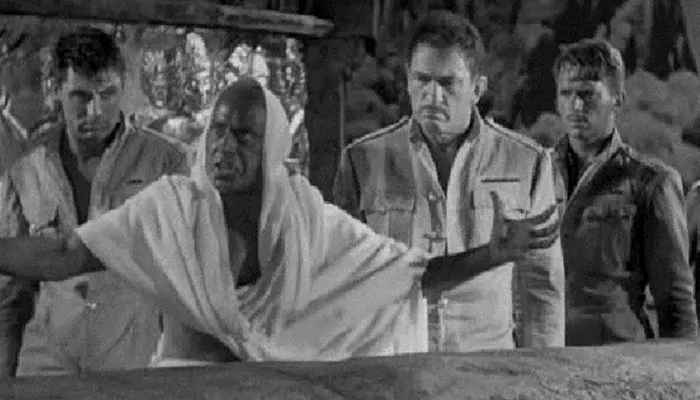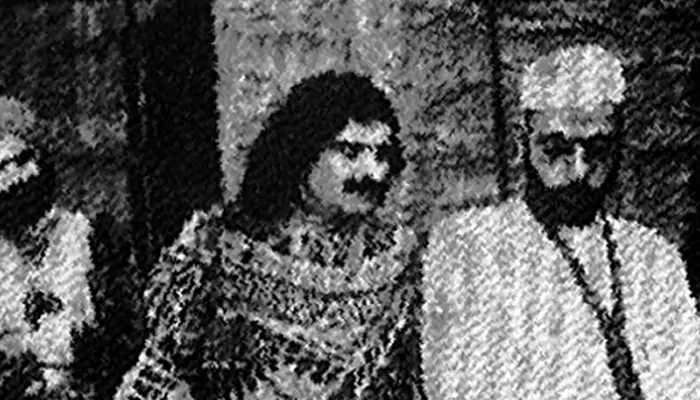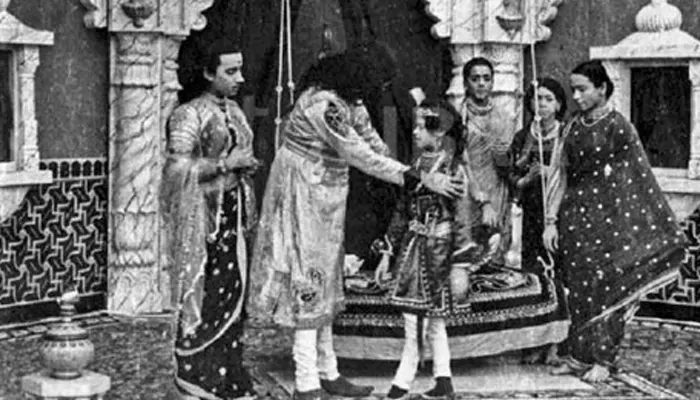
The story of how a humble, silent film from 1921 was censored by the British for dressing a mythic hero in khadi and Gandhi’s iconic cap
In 1921, Indian cinema was still finding its voice literally and politically. Silent films dominated the screens, usually telling stories from mythology or folklore. But one film, Bhakta Vidur, stirred more than applause. It sparked colonial fear. The film didn’t shout slogans or show protests. Yet, it was banned by the British. Why? Because it dared to depict a mythological character who bore a striking resemblance to Mahatma Gandhi.
This made Bhakta Vidur the first Indian film to be officially banned by the British Raj. A turning point in the story of both cinema and colonial censorship.

Directed by Kanjibhai Rathod and produced by the Kohinoor Film Company, Bhakta Vidur was based on the Mahabharata. It told the story of Vidura, the wise and principled advisor to the Kauravas and Pandavas. But Rathod didn’t portray Vidura in traditional royal garb. Instead, he gave him a Gandhi cap, a khadi outfit, and even a spinning wheel.
The resemblance was not coincidental. By 1921, Gandhi was the face of India’s non-cooperation movement. His image had become a symbol of resistance. By dressing Vidura like Gandhi, the filmmakers drew a powerful parallel between ancient dharma and modern nationalism.
The British authorities quickly caught the symbolism. They were not amused. Censors in Bombay initially allowed the film, but concerns escalated when it reached other parts of India. In Karachi and Madras, the film was outright banned. The reasoning was clear: it was “likely to excite disaffection against the government.”
Officials believed that the film disguised political propaganda in religious storytelling. They saw it as a threat to order. The idea of Gandhi-like characters appearing on screen—especially in a spiritual, heroic light—was too dangerous in a colony simmering with unrest.

Bhakta Vidur had no direct references to British rule. But in the silence of its frames, it spoke volumes. The costume, the mannerisms, the charkha—it was all coded language for the freedom movement.
Vidura, the voice of reason in the Mahabharata, was shown opposing injustice and urging moral resistance. This mirrored Gandhi’s ideals of non-violence and civil disobedience. In an era when political gatherings were often restricted, cinema provided a space for subtle messaging. And Bhakta Vidur used it well.
Despite the ban in some provinces, the film gained wide attention. In Bombay, where it was initially allowed, it drew large crowds. For many Indians, it was the first time they saw their political leader reflected in mythic form. That connection left a lasting impact.
The ban itself added to the film’s legend. It marked the beginning of British anxiety over Indian cinema. For the first time, the government realized that movies could influence minds just as powerfully as speeches or newspapers.
|| A thread on ‘Firsts’ Of Indian Cinema You Didn't Know || 🎬
— Cine Vichaar (@Cine_vichaar) June 21, 2022
1) Bhakta Vidur (1921) - First film to face a ban.
It is a silent Indian film directed by Kanjibhai Rathod. In this film the Hindu mythological character Vidura was moulded on the personality of Mahatma Gandhi. pic.twitter.com/fRpevXSgZP
No known copy of Bhakta Vidur survives today. Like many films of the silent era, it has vanished from physical archives. But its legacy continues. Film historians remember it as the film that challenged colonial censorship not with direct defiance, but with creative subtext.
It paved the way for other politically charged films in India. Later works, such as Thyaga Bhoomi (1939) and Gandhi (1982), would carry forward the tradition of cinema as a tool of resistance and reflection.
Bhakta Vidur was more than just a movie. It was an act of bold symbolism. At a time when voicing opposition could lead to imprisonment, this silent film managed to say what thousands were thinking. By dressing a Mahabharata character in khadi and placing a charkha beside him, it merged mythology with modern rebellion.
In doing so, it forced the British to reveal their fear—not of weapons, but of ideas.